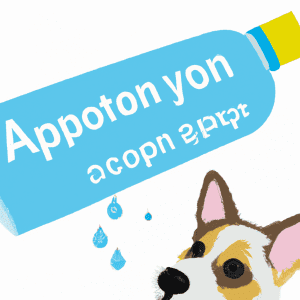Welcome to Can I Pet That Dog Cops, the one-stop shop for all of your canine legal questions. Whether you’re looking to find out if you can legally pet someone’s dog or if you have questions about the laws surrounding owning a pet, this website has you covered.
With our comprehensive legal database and experienced team of attorneys, we can provide you with the resources you need to make informed decisions and stay on the right side of the law. So, don’t hesitate to reach out with your canine legal questions – we’re here to help!
What Are the Rules for Petting Police Dogs?
If you come across a police dog, it’s important to remember that these animals are highly-trained and should be treated with respect. Here are some rules for petting police dogs:
- Ask permission first. Before you approach a police dog, make sure to ask its handler for permission. They are the ones in charge and need to give you the green light before you can pet their dog.
- Let the dog come to you. Don’t try to pet the dog until it has come to you. This will prevent startling the animal, which could lead to an unpleasant situation.
- Pet the dog gently. When you are allowed to pet the police dog, be sure to do so gently and avoid being too rough.
- Don’t feed the dog. Unless instructed otherwise, never feed a police dog. These dogs are trained to eat specific foods and anything else could potentially be dangerous.
- Leave the dog alone when it’s working. If the police dog is working, it is important to stay away.
These animals are trained to focus on their job and distraction could potentially be dangerous. Following these simple rules will ensure that everyone remains safe and happy when petting a police dog.
What to Do When You See a Police Dog in Public
If you ever come across a police dog in public, don’t panic! These animals are usually highly trained and very friendly, and their handlers are nearby to keep them (and you) safe. Here are some tips to keep in mind when you spot a police dog in public:
- Stay calm. It’s normal to feel a bit intimidated when you see a police dog, but try your best to stay calm. Don’t make any sudden movements, and don’t run away or shout.
- Don’t approach the dog. These dogs are trained to respond to their handlers, so it’s important to stay back and give them their space. Plus, the handler may not want you interacting with their dog.
- Don’t distract the dog. Don’t make loud noises or throw objects near the dog, as it could distract them from their work.
- Show respect. Police dogs are doing an important job, so it’s important to show them respect. If you’re ever unsure of what to do, just follow the handler’s instructions.
Remember, police dogs are usually friendly and well-behaved. Following these tips will help ensure that you, the dog, and the handler all stay safe.
How to Read a Police Dog’s Body Language
Did you ever wonder how police dogs communicate with their handlers? It’s not through words but through body language. Reading a police dog’s body language can help you understand how the dog is feeling, and can even help you stay safe around the animal. Here’s what to look for.
Ears: Ears are often an important indicator of a dog’s feelings. If the ears are pricked forward and alert, the dog is likely feeling curious and attentive. If the ears are pinned back against the head, that usually means the dog is feeling fearful or anxious.
Tail: The tail is another important indicator of a dog’s feelings. If the tail is held high, the dog is likely feeling happy and confident. If the tail is down and tucked between the legs, the dog is likely to feel scared or intimidated.
Mouth: A police dog’s mouth can also be an important indicator of emotion. If the mouth is open and the tongue is hanging out, the dog is probably feeling relaxed and comfortable. If the mouth is closed and the lips are drawn tight, the dog could be feeling alert and ready for action.
Movement: Pay attention to how the dog moves. If it is moving quickly, with its head held high, it is likely feeling confident and energetic. If it is moving slowly, with its head lowered, it is likely feeling more cautious and timid. These are just a few things to look for when reading a police dog’s body language.
Of course, it’s important to remember that all dogs are different, so the best way to understand a particular dog is to spend time with it. With a little practice, you’ll be able to read a police dog’s body language like a pro!
What to Do When a Police Dog Approaches You
If you ever find yourself in a situation where a police dog is approaching you, remain calm and still. Do not run away, as this could agitate the dog and cause the handler to think you are a threat. Instead, keep your hands to your sides and avoid making any sudden movements. If the dog is barking, don’t be alarmed.
It is simply a way for the handler to assess the situation and determine if you are a threat. If the handler orders you to move, follow the instructions. If the handler orders you to put your hands up, do so. Keeping your hands visible prevents the dog from interpreting your movement as a threat.
If the dog is released, remain still and do not make any sudden moves. The dog will likely pass by you without making contact. If the dog does make contact, roll into a ball and cover your head and neck with your arms. This will protect you from any potential bites.
If the dog handler orders you to move, do so slowly and follow the instructions. Remember, the police dog is trained to protect and serve, so it’s important to remain calm and follow the instructions of the handler. Once the situation has been resolved, the handler will thank you for your cooperation.
How Police Dogs Are Trained to Respond to Commands
Police dogs are an invaluable tool when it comes to law enforcement. They are highly trained and incredibly skilled and can be used for a variety of tasks. So, how are police dogs trained to respond to commands? Police dogs have to be trained from a young age to be able to respond to commands properly.
The training process begins with basic commands such as “sit,” “stay,” and “come.” The dog is also taught to respond to hand signals, which is useful if the handler needs to keep quiet while on the job. Once the dog has mastered the basic commands, they are then taught more advanced behaviors such as searching for drugs and explosives, tracking missing persons, apprehending suspects, and more.
This part of the training is usually done with the help of scent-discrimination exercises, in which the dog is trained to differentiate between different smells and respond to specific commands. Police dogs also need to be trained to be obedient and responsive to their handlers.
This is done through positive reinforcement, where the dog is rewarded for following commands and performing well. The goal is to create a strong bond between the dog and the handler so that the dog will always listen to the handler and do what they are asked.
Police dogs are an important asset to law enforcement, and they need to be trained properly in order to be effective. With the right training, they can be an invaluable tool in helping to keep our communities safe.
How to Stay Safe Around Police Dogs
Police dogs are an important law enforcement tool, and it’s important to know how to stay safe around them. Here are some tips to keep in mind:
- Don’t run away. Running away from a police dog can be perceived as a threat, and the dog may be trained to chase after you. Instead, remain still and stay calm.
- Don’t make sudden movements. If a police dog is nearby, don’t make any sudden movements that could be perceived as threatening. This may include reaching for your pockets or taking any items out of your pockets.
- Don’t make eye contact. Making direct eye contact with a police dog may be seen as a threat and could cause the dog to become aggressive.
- Speak calmly. Talk to the police dog in a calm, soothing voice. This will help to reassure the dog that you are not a threat.
- Don’t pet the dog. Even if the dog appears friendly and calm, it is best to not pet the dog. The dog may be trained to attack if it is touched in an unexpected way. By following these tips, you can help ensure that you stay safe around police dogs.
How to Properly Interact with a Police Dog
Interacting with a police dog can be a thrilling experience, but it’s important to remember that these animals are highly trained and have a job to do. Here are some tips for properly interacting with a police dog:
- Respect the dog’s handler. When approaching a police dog, always ask the handler’s permission first. The handler knows the dog best and should always be in control of the interaction.
- Don’t make sudden movements. Police dogs are trained to be aware of any sudden movements, so it’s important to remain calm and still when interacting with them.
- Don’t touch the dog without permission. Never pet or touch the dog without permission from the handler.
- Don’t make loud noises. Loud noises can startle a police dog and can interfere with the dog’s training.
- Don’t feed the dog. Feeding a police dog can be dangerous, as it could interfere with the animal’s training and diet.
- Be patient. Police dogs are highly trained and may take some time to get used to new people. Respect their process and don’t rush the interaction. By following these tips, you can have a safe and enjoyable experience interacting with a police dog.
What Are the Benefits of Petting Police Dogs?
Petting police dogs comes with many benefits that both the dog and the human can enjoy. For the dog, it can provide a sense of comfort and security. Physical touch and attention can help to relax a dog and reduce any anxiety it may have. Petting also provides a bonding experience between the dog and the human.
For humans, petting a police dog can provide a sense of connection and companionship. It can be a way to show appreciation to the dog for all the hard work they do. It can also be a great way to relieve stress and relax.
Just the simple act of petting a dog can lower blood pressure and heart rate, as well as produce hormones like oxytocin and serotonin which are associated with feelings of happiness and relaxation.
Overall, petting police dogs can be a great way to bond and show appreciation, as well as help reduce stress and anxiety for both the human and the dog.
What Kind of Rewards Do Police Dogs Receive?
Police dogs are an invaluable part of law enforcement and are rewarded for their hard work and dedication. Rewards typically come in the form of praise and treats. A reward should be given immediately after a successful task, so the dog knows that the behavior is desirable and can continue to be repeated.
Praise is one of the most common rewards for police dogs. Verbal praise from their handler or other officers is incredibly important for the dog to feel valued and appreciated. This also helps to build a bond between the handler and the dog. Treats are another common reward for police dogs.
These can range from special treats made especially for dogs to regular treats like dog biscuits or pieces of meat. Treats are an effective way to reward the dog for good behavior, as they can be used as positive reinforcement. Finally, some police departments may also offer more creative rewards, such as a day off, special toys, or a chance to play with other dogs.
These kinds of rewards are a great way to show the dog how much they’re appreciated, while also providing them with a bit of fun and relaxation. All in all, police dogs receive a range of rewards for their hard work and dedication, from praise and treats to special days off and toys. This helps to reinforce good behavior and build a strong bond between the dog and its handler.
1How to Prepare Yourself Before Petting a Police Dog
Before you prepare to pet a police dog, there are a few things you should keep in mind. First, always ask permission before petting any police dog. It’s important to remember that these dogs are highly trained and even the sweetest ones may be unpredictable. Second, approach the dog slowly and calmly.
Speak softly and avoid making sudden movements. Remember that police dogs have been trained to protect and react quickly in certain situations. Third, let the dog sniff you before you pet it. This is the dog’s way of getting to know you and will help to put it at ease. Don’t pet the dog until it is completely comfortable and relaxed.
Finally, when you do pet the dog, be gentle. Start with a light stroke and let the dog adjust to your touch. Don’t get too rough or pull on the dog’s fur. Following these steps will help you to safely and properly pet a police dog.
The Can I Pet That Dog Cops program is a great way to encourage responsible pet ownership and promote mutual respect among pet owners and their neighbors.
By providing education about canine behavior and safety, as well as helping to resolve conflicts between pet owners and their neighbors, the program helps to create a more harmonious community for everyone.
With its focus on education, communication, and respect, the Can I Pet That Dog Cops program is an important tool for reducing the risk of dog-related incidents in the community.




